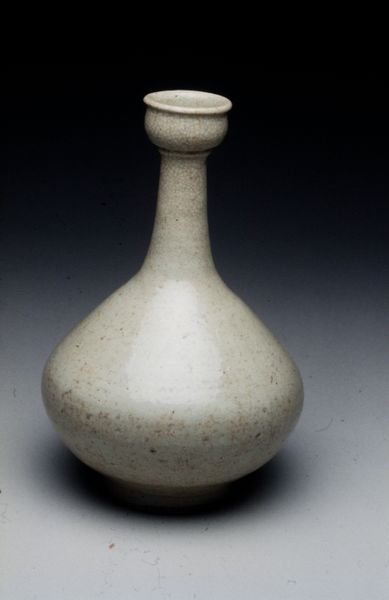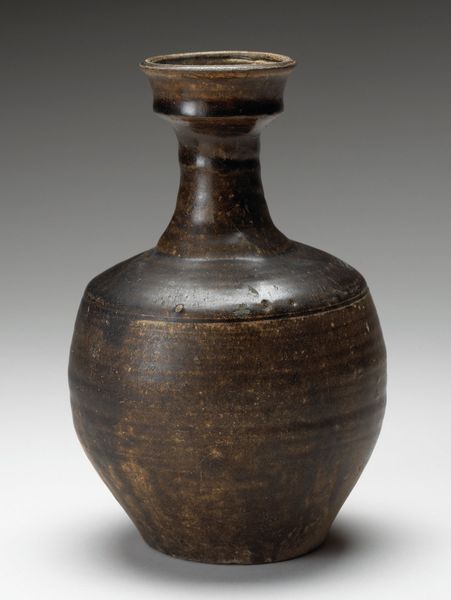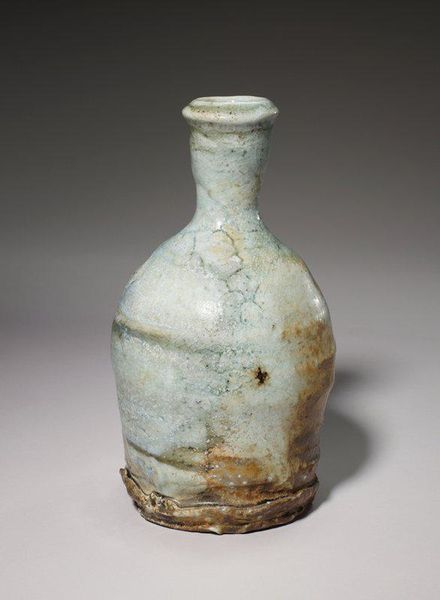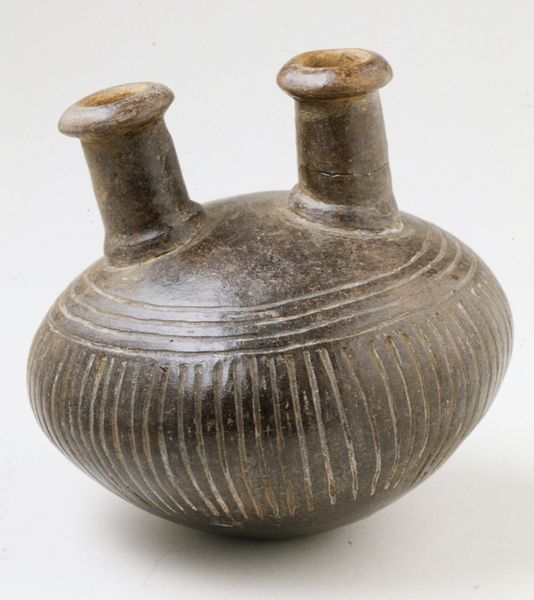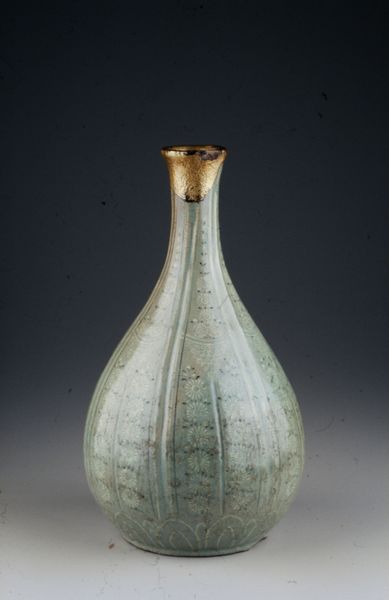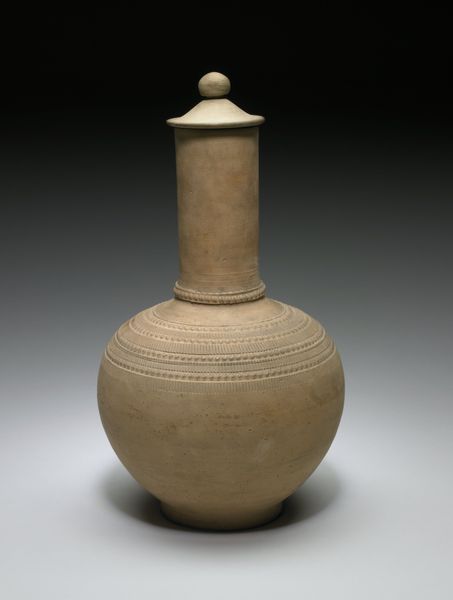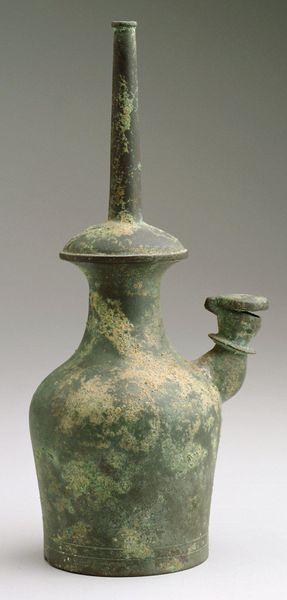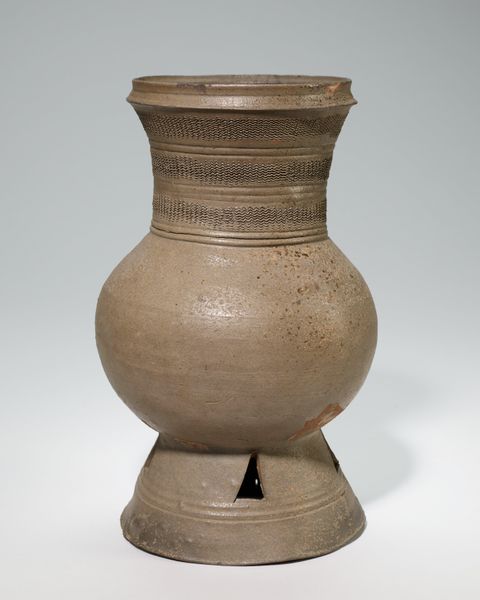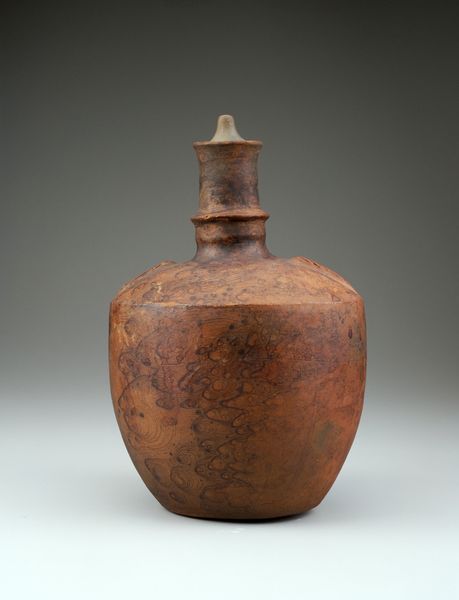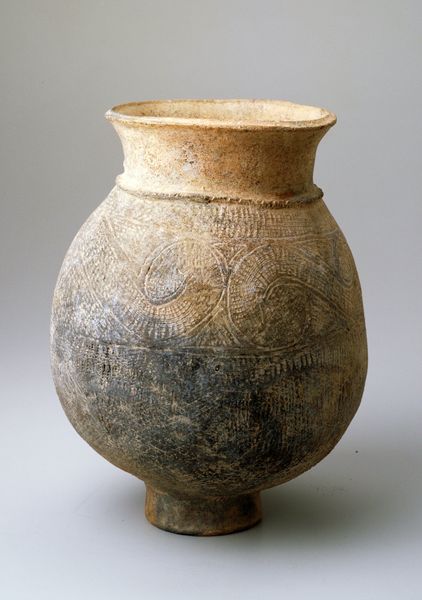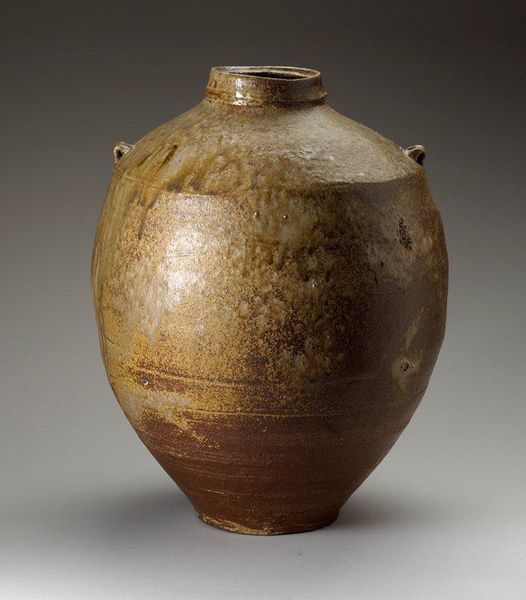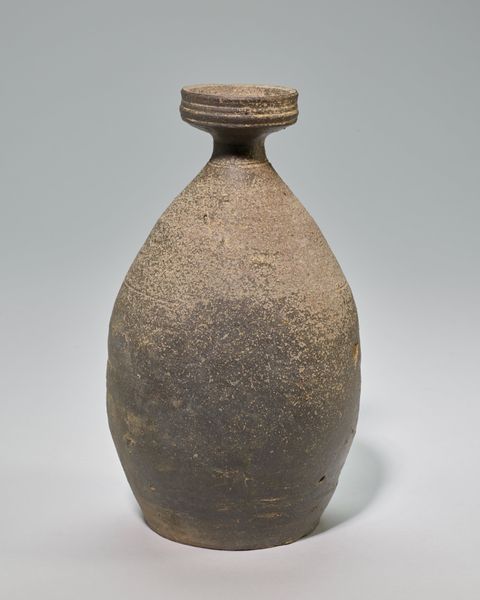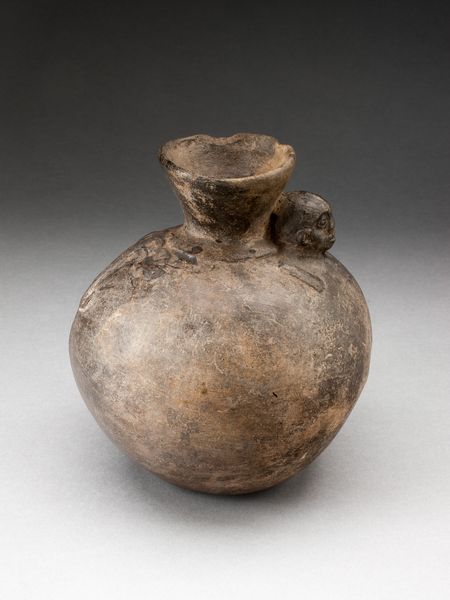
ceramic, sculpture
#
medieval
#
asian-art
#
ceramic
#
form
#
sculpture
#
ceramic
Copyright: Public Domain
Editor: Here we have an earthenware water vessel, dating back to around the 14th century. What strikes me immediately is the visible cracking in the glaze. How does the process and materials used to create this piece influence how we should understand its purpose? Curator: Absolutely. Examining the earthenware material itself, its accessibility points to broader consumption patterns within its historical context. This wasn’t porcelain reserved for the elite, but a common material, suggesting functional, everyday use. The cracking, called crazing, is fascinating. It was probably unintended but became embraced and even simulated later on. We might consider the social value placed on "perfect" vs. "imperfect" craftsmanship in this culture and time period. Do you see any other aspects of its form that could inform a materialist perspective? Editor: I notice the spout. Given the vessel's purpose of holding water, it appears specifically designed for pouring or dispensing. Does the way the spout is formed suggest anything about who was making or using this vessel? Curator: Good question! Its somewhat simple design suggests mass production, potentially within a workshop setting. Looking at the division of labor implied by its creation – from clay sourcing and processing to shaping, glazing, and firing – provides insights into the economic realities surrounding its production. Were these individually commissioned pieces, or something available to a wider population? Who would be operating the kilns, and under what conditions? This informs its role as a commodity, reflective of 14th-century life. Editor: So, it is not just an aesthetic object but something interwoven with economic and social fabrics of its time. I hadn't thought about the kilns. Curator: Exactly. By focusing on the means of production and consumption, we move beyond a purely aesthetic appreciation and into a richer understanding of this water vessel's place in history. Editor: Thank you, that was enlightening! Curator: It's always exciting to explore beyond just the visual elements and consider what it tells us about people and their labor.
Comments
minneapolisinstituteofart almost 2 years ago
⋮
The elegant shape of the ritual bronze kundika was so admired during the Goryeo dynasty that potters also produced porcelain examples with celadon glaze. The aristocracy used these vessels for decoration.
Join the conversation
Join millions of artists and users on Artera today and experience the ultimate creative platform.
